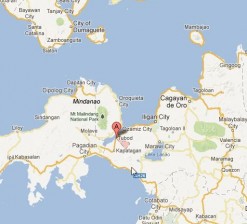Tension grips Lanao towns

While the 12 victims—including a daughter and granddaughter of Manamparan —were being buried, one of the eight wounded victims died, bringing to 13 the number of fatalities from the incident, according to Brig. Gen. Daniel Lucero, commander of the 1st Infantry Division based in Zamboanga del Sur.
Lucero described as “tension filled” the situation in the towns of Nunungan, Kapatagan, Tubod and Lala in Lanao del Norte, and Picong, Madamba and Ganassi in Lanao del Sur, as each victim was interred in accordance with Muslim rites.
Lucero said the military provided security to the relatives of the dead to prevent any untoward incidents.
He said the main suspects in the ambush and their relatives lived in the same areas as the victims and their families.
Earlier, Col. Rodrigo Gregorio, spokesman of the Western Mindanao Command, said the armed men that ambushed Manamparan’s group at around 6:30 p.m. on Thursday were reportedly led by Kadie Hamin of Barangay (village) Kaludan in Nunungan.
Article continues after this advertisementHamin is said to be related to one of Manamparan’s political rivals, whose family has a longstanding grudge against the mayor’s family.
Article continues after this advertisementManamparan, 62, and his supporters were on their way home after a campaign sortie in Barangay Malaig when they were ambushed.
The mayor, who has fielded his son and namesake in the mayoralty race, is seeking election as vice mayor.
Lucero said Manamparan, who was among the eight wounded victims, was in stable condition and continued to recuperate at an undisclosed medical facility.
When the Inquirer contacted him on Saturday, Manamparan said he was thankful for surviving the attack but was grieving hard over the loss of his relatives, especially his daughter Adnanie.
He said the ambush may have been related to an existing rido (clan feud) that was made more complicated by his family’s bid for elective positions.
Gregorio said soldiers and policemen were hunting for Hamin.
Col. Glenn Macasero, commander of the 103rd Infantry Brigade, said additional troops were provided to beef up security in the Lanao del Sur towns of Picong, Ganassi and Madamba “to ensure that there will be no escalation of violence.”
“Right now, the situation appears normal but everyone is watchful. We made sure our troops are scattered so that in case some sector would create havoc or anything, we are ready to curb it,” Macasero said.
Lucero said the military continued to pray the situation would not escalate.
He said the political feuds in Nunungan and other Lanao del Norte towns might be ended if the antagonists engage in peace dialogues and pledged to pursue peaceful means to resolve their differences.
Family feuds that escalate into cycles of revenge or rido are prevalent in the Philippines. They are known by other names—binaslanay in the Visayas and other Visayan-speaking areas and vendetta in other provinces.
Moro academician Abhoud Syed Lingga said it is pronounced in Moro communities, mainly due to maratabat or pride.
“It is related to the Moro people’s deep sense of personal pride and honor,” he said.
A 2005 study commissioned by The Asia Foundation showed that a protracted feud could start from a fairly minor matter. The ones that turn bloody and are protracted usually arise from disputes over land and political rivalry.